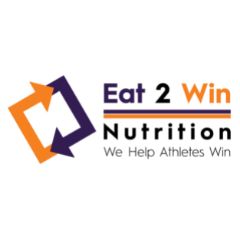Nutrition Periodization for Football
Q&A for Session #6
Pratik Patel, MS, RD, CSCS, CSSD
Sports Nutrition Symposium 2.0
Wednesday January 20th @7pm CST
This presentation will cover the nutrition needs of American football over a full calendar year including specific needs and aims during the offseason and competition time points.
All live sessions are free to attend. If you want lifetime access to the sessions from Sports Nutrition Symposium 1.0, 2.0 and 3.0 then check out the VIP Pass!
- How might you take data from the S&C team and use that to enhance nutritional considerations for an athlete and what data might be beneficial to get?
- Depends on the S&C team, what they see and where each player is at. Someone is strong but not very fast or fast but not very strong, a lot of S&C coaches and position coaches take that information and other metrics measured in the strength room, they will communicate that to the medical team, do body comp assessments and then see where they can improve nutrition in relation to what body comp goals they set out to increase performance in their specific position. Use that information to manipulate intake.
- What are your thoughts on low-carb (not particularly keto) for football athletes?
- Not suggested. If they want to try lower carb could be done in off-season when intensity is a lot less than with the team. Best time to do it is in the off-season. Definitely not recommended during competition. Have had players that have done it and because of low CHO availability they get through a few periods and they are gassed. Increases chance of hurting themselves.
- How hard has it been getting players to stay bought in during the offseason and what have you found that worked best?
- Very tough because guys are traveling all over and working with all different types of people. Depends on the motivation of the player. In the off-season training program it depends on how much buy-in the players have, the culture.
You are not with the players so it's hard. Even though they trust you and respect you, you cannot be monitoring them and “holding their hand” like you can when they are with you at the facilities. Difficult to work with them abroad
- Very tough because guys are traveling all over and working with all different types of people. Depends on the motivation of the player. In the off-season training program it depends on how much buy-in the players have, the culture.
- How do you handle situations with superstar players who have their own trainers and dietitians who have differing views from team programming?
- You see a lot more of it with fitness/exercise gurus and holistic health gurus. Most guys aren't going to hire their own dietitian, mostly focus on training. Commonly they hire their own chefs and that’s where dietitians can get involved. It’s all about what’s best for the athlete and this way the dietitian can communicate with the chef and inform them on workload, weight room, number of snaps, this is what's going on at practice and this is how I would structure dinner, and snack, etc., MOre about being as open minded as possible because at the end of the day, if you aren't open to working with the people they trust, it'll make for a negative work experience.
- Do you recommend Creatine and Collagen Protein prophylactically for brain injury and soft tissue injury protection respectively?
- Yes. The research is there and it's coming about with concussions but with preventing soft tissue injuries, decreasing inflammation, cramping, and dehydration those that supplemented with creatine had decreased risks and incidents with all. Big proponent of it but it all comes down to athletes and what they want to do, you can’t force them to do it. There is a lot of stigma behind taking creatine and pulling muscle. Gets a negative association and connotation, but a big proponent of it.
- How did you manage concussions in the NFL?
- Yes. Having an exceptional medical staff helps with being able to show MNT evidence to help with all the injuries, etc. Put all research together and present it. Really comes down to what we feel we could integrate and what the athletes are willing to do. Omega 3’s were a part of it.
- What are practical tools you use to manipulate macronutrients on a daily basis?
- Calculations-excel, comprehensive data management softwares that can put data in and use that to show what practice looks like, schedule looks like and be able to manipulate that. Once you get in season, every week is almost identical so you know most of what’s going on so you should be able to manipulate CHO options and offerings based on training status and having certain things available in the locker room/weight room/outside of meeting rooms and in the cafeteria working with the head chef is pretty easy.
- What methods do you use to meet very high calorie needs in a healthy way that is palatable and easy for players?
- Sometimes that's not easy because some athletes struggle to eat. But if you have players that aren't used to doing that, we have data that a lot of these players are not meeting their CHO requirements for CHO availability and intake. If they go from a very average intake to a very high intake it's a shock to the system where the feel sick, bloating, don’t feel very good, so it’s really finding where to meet them in the middle
- Finding things that they like that tastes good in and around workouts because they’re going to be able to burn it off whether it's chews, smoothies, juices, pb&j. Limiting Gatorade drinking outside of practices because they will drink that all day long.
Being okay with those things because you can’t meet 5,000 calories with just eating healthy clean-type foods because that’s almost impossible for most of these athletes. So being okay with putting things out there that they like to eat and want to eat whether it's fruit snacks, skittles, in and around training. Take advantage of liquid calories during meals.
- What have been your go-to CHO sources during practice/games?
- During practice- gatorade primes, skittles, gatorade chews, stinger chews, applesauce packets, bananas; whatevers the most comfortable for the players and what they need/ask for. Sometimes you have to defy science.
- Are the needs the same for young athletes Middle school and high school? Or what adjustments do you recommend?
- If you’re going by just size and these kids are still developing you want to take into consideration that they aren't 300#’s and they won't be expending the same or doing the same activity. So the size of the athlete, goal of the athlete, that's gonna dictate how active they are, how many calories they're going to eat. But you also never really want to restrict when they’re still expending a good amount depending on what they're doing. The biggest determinants of energy expenditure are going to be age, height, weight and activity level.
- How extensive/detailed of a nutritional plan do players receive?
- “Laughs”- Honestly, as extensive as they want it to be. The hardest thing about working with larger team sports (110-115 or 90 players) you get less time, it depends on how dialed in on it. Are they only wanting a plan because they think they need to have one or are they really into it and committed to it and really want it? How extensive really varies on the athlete. Very individual.
Have to be able to sit down with players and educate them and discuss because not going to give them a piece of paper and expect them to read it and go by what it says. General meal plans aren't going to help them out because it's not going to benefit them. When extensive things are created, the athlete really needs to want it and understand it and must be willing to sit down and educate them and do a proper assessment.
- “Laughs”- Honestly, as extensive as they want it to be. The hardest thing about working with larger team sports (110-115 or 90 players) you get less time, it depends on how dialed in on it. Are they only wanting a plan because they think they need to have one or are they really into it and committed to it and really want it? How extensive really varies on the athlete. Very individual.
- How do you change macros to change body comp (for fat loss) without causing energy losses for training?
- Depends on the time of year. Becomes more difficult if going through practices and don’t have a ton of time with the player and we don’t have a lot of opportunity to do extra cardio or lifting sessions with them due to a variety of reasons. What I try to do is keep protein intake relatively high because you’re looking for satiety but also maintain and gain lean muscle mass, fat you can manipulate along with your CHO. So generally what you’d want to do is calculate average energy expenditure at the weight they currently are and then maybe cut by 25% over the course of a week and then have maybe like a higher intense training day where we have higher carb days and then you have more of your rest and moderately lower intense training days where you cut the CHO intake down.
- Seen in research when you have intermittent CHO availability it's not going low carb, they’re getting it in and around they’re workouts, especially on days that are intense, but on days that they’re really not doing anything, those are the days you can cut down so the average caloric deficit is somewhere around that 25% and then you monitor the guys (weigh-ins, body comps) and then you see you get a new baseline and then you adjust it again
- What are the nutritional considerations with travel during the season?
- Flights pose a risk because of radiation exposure, influences immunity, higher risk for URTI so you need to ensure plenty of fluids, antioxidants, high micronutrient foods and “fun foods” but also making sure once you get to the hotel that you have a good spread to help them rehydrate get back to square one.
- Understand the stressors of travel; Having all those things at the hotel-Ship it in advance or have it on the travel party, or have hotel supply it; Having the same type of menu that they normally do with small changes here and there; These are the things that we take into account when it comes to travel because having certain favorite options and supplements available at the hotel so its reinforcing same thought process than we normally have while at home.
- What software did you use to make your powerpoint? Very visually appealing!
- Powerpoint with a nice picture backdrop!


